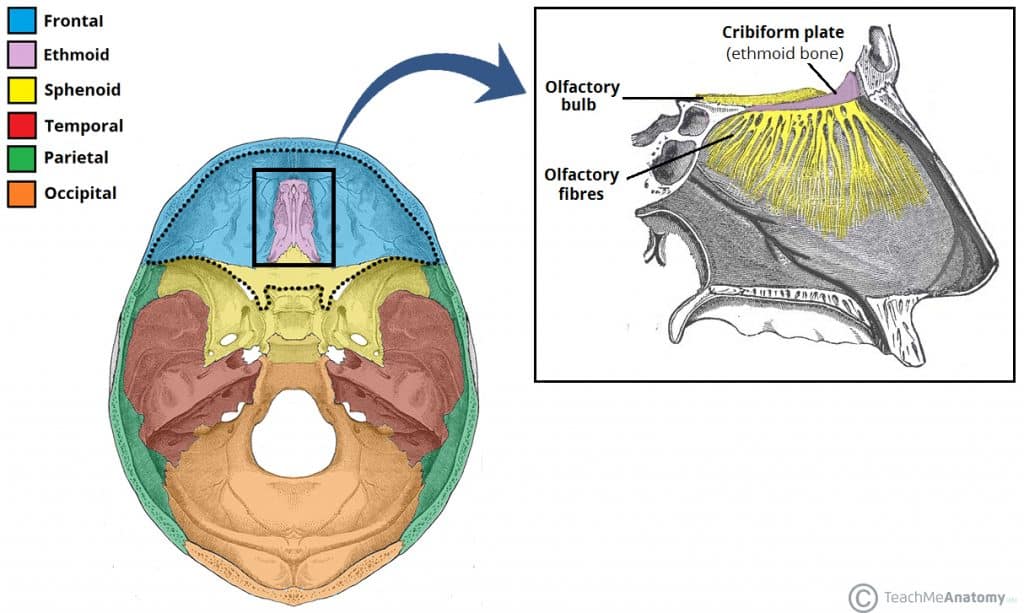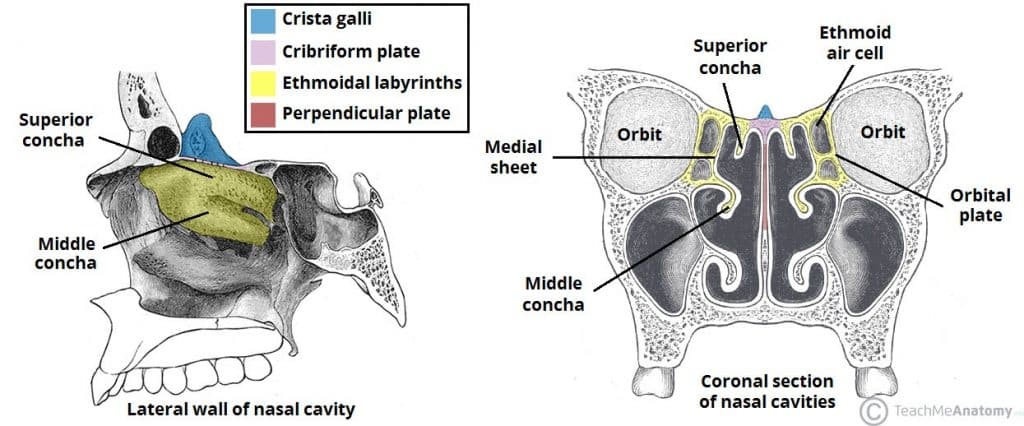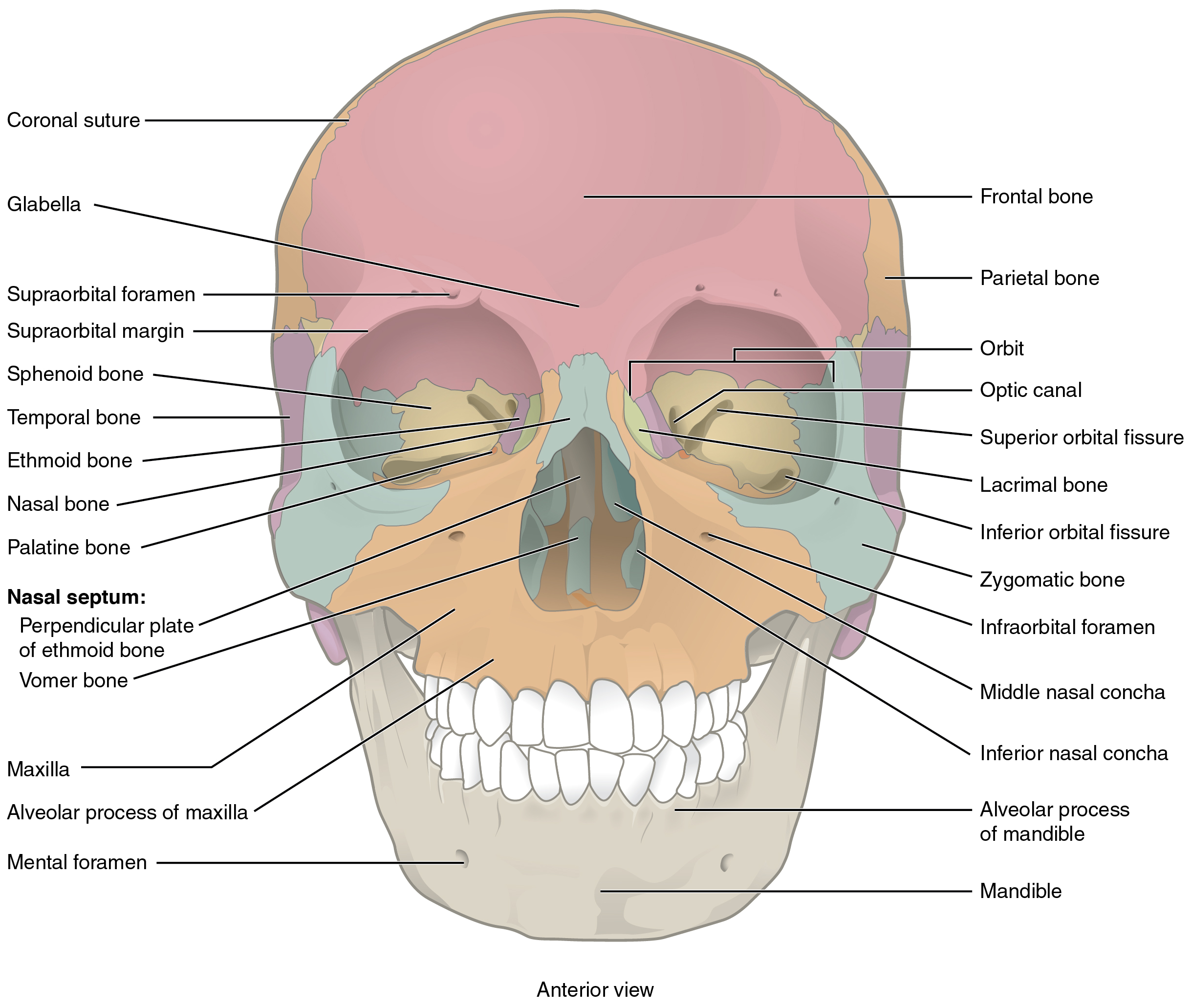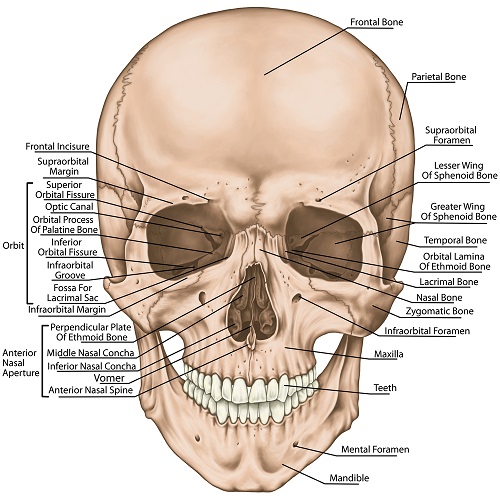It does not correspond to any user ID in the web application and does. The easiest way to note down a number is to make that many marks - little Is.

Ethmoid Bone Location Structure Relationships Teachmeanatomy
This quiz will test your knowledge on how to identify these bones ethmoid vomer lacrimal zygomatic sphenoid etc.

. The oblique pericardial sinus is a blind ending passageway located on the posterior surface of the heart. Thus I means 1 II means 2 III means 3. Which of theses.
In this article we shall look at the. The olfactory nerve CN I is the first and shortest cranial nerve. Another way to classify bones is by which of the two skeletons of the body they belong to - axial or appendicular.
The frontal bone forms the front of the skull and is divided into three parts. Skull bones frontal occipital sphenoid ethmoid 2 parietal 2 temporal. It functions in lever actions of the lower limb It is a sesamoid bone.
The paranasal sinuses maxillary frontal ethmoid and sphenoid abut the orbit on three sides8 The lateral aspect of the ethmoid bone. The olfactory nerve CN I Identify the recessed area surrounding the crista galli. This combination of thin bone naturally occurring perforations and loosely adherent periorbita allows for communication of infectious and inflammatory processes between the ethmoidal air cells and the medial orbit.
The mission of Urology the Gold Journal is to provide practical timely and relevant clinical and scientific information to physicians and researchers practicing the art of urology worldwide. What structure of a typical vertebra projects laterally and allows for ligament and muscle attachment. Inside the neurocranium it articulates with the frontal and sphenoid bones.
Embryologicallly the olfactory nerve is derived from the olfactory placode a thickening of the ectoderm layer which also give rise to the glial cells which support the nerve. For these reasons the medial wall is a common location for the development of subperiosteal abscesses Fig. Skull bones quiz of the cranial and facial bones for anatomy and physiology.
It is composed of the temporal occipital sphenoid and ethmoid bones as well as the orbital part of the frontal bone. The ethmoid bone forms the medial wall of the orbit the roof of the nasal cavity and due to its central location it articulates with numerous bones of the viscerocranium. With few exceptions neck CT should be.
The cookie is used to identify individual clients behind a shared IP address and apply security settings on a per-client basis. In total the bones of the axial skeleton include. Identify the cranial nerve that passes through the olfactory foramina.
When you are taking anatomy and physiology you will be required to know the location of the cranial and facial bones. In the emergency department setting CT is performed to investigate acute infectious or inflammatory symptoms and chronic processes. Identify the location of the ethmoid bone.
These bones contain numerous openings or foramina that allow cranial nerves and blood vessels to pass from one region to another. The cookie is set by CloudFare. 1 It is found in the ankle 2 It is a type of carpal bone 3 It functions in lever actions of the lower limb 4 It is a sesamoid bone.
Identify characteristics of the patella. Interpreting findings seen at CT of the neck is challenging owing to the complex and nuanced anatomy of the neck which contains multiple organ systems in a relatively small area. Identify the landmark that projects superiorly into the floor of the skull and serves as a site of attachment for the meninges.
The axial skeleton forms the main frame of the body - the bones of the head and the trunk. With skull base fractures these structures can become damaged resulting in serious and. To promote equity and diversity among authors reviewers and editors.
To provide a platform for discussion of current ideas in urologic education patient engagement. However four strokes seemed like too many. It is a special visceral afferent nerve which transmits information relating to smell.
The transverse pericardial sinus is. 1 Transverse process 2 Intervertebral. The pericardial sinuses are not the same as anatomical sinuses such as the paranasal sinusesThey are passageways formed the unique way in which the pericardium folds around the great vessels.

7 1b Cranial Bones Medicine Libretexts

The Skull Anatomy And Physiology

Cranial Bones The Definitive Guide Biology Dictionary

Ethmoid Bone Location Structure Relationships Teachmeanatomy
0 Comments